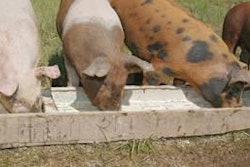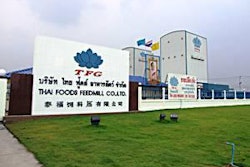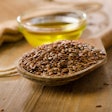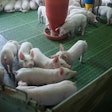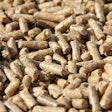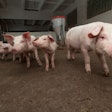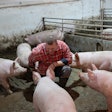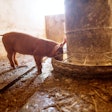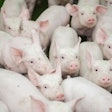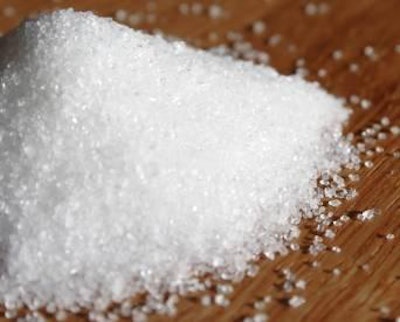
Although weaned pigs prefer lactose over starch, they can use other forms of simple sugars instead of pure lactose or lactose from milk products.
For example, monosaccharides such as glucose, fructose, and maltose, and oligosaccharides such as sucrose and maltodextrins are at least as effective as lactose in supporting growth in weaned pigs.
Table sugar Increasing piglet diet sweetness by adding sucrose has long been practiced as a means of enhancing diet palatability and consumption. Adding as much as 20 percent sucrose does not pose any problems on growth and health, but it must be kept in mind that sucrose attracts water, and as such it will produce watery feces when used in such high concentrations.
Only when sucrose is fed to neonatal pigs (less than seven days old) it can cause toxicity, as at such an early age the secretion of the enzyme sucrase is not yet fully developed. Under most practical conditions, adding five percent sucrose is quite common for commercial diets.
Molasses Molasses is a by-product of the extraction of sucrose from sugar beets or sugar cane. It is a viscous semi-liquid with about 75 percent dry matter and 50 percent sugars. Sucrose in molasses is in equilibrium with glucose and fructose. Molasses is also rich in ash (nine percent) and most of its nitrogen is in non-protein compounds. Molasses is particularly rich in potassium, which may upset the electrolyte balance, increasing thus osmotic pressure and leading to secretory diarrhea.
However, such a hypothesis has yet to be proven! Studies with cane molasses indicated that pigs can utilize molasses as efficiently as lactose in diets containing as much as 20 percent molasses during the initial 30 days post-weaning. Although molasses is an attractive and relative inexpensive ingredient, it is low in energy compared to lactose. Additionally, molasses is rather difficult to handle during cold weather because of its high viscosity.
Dextrose Dextrose monohydrate is derived from starch hydrolysis. It is comprised of crystallized glucose containing one molecule of water for each molecule of glucose. Dextrose monohydrate has a 90 percent lactose equivalent value on a dry matter basis compared to crystalline lactose because of the degree of hydration. Dextrose is highly hydroscopic and tends to cake during prolonged storage.
Young pigs can utilize dextrose as effectively as lactose immediately after birth. Dextrose usage in most commercial piglet diets is between 2.5 and 5 percent, with higher levels being possible in pelleted feeds that do not have the problem of caking.
Maltodextrins Maltodextrins are glucose disaccharides derived from starch hydrolysis with a dextrose equivalent (DE) value of less than 20. Dextrose equivalent is a grade specification indicating percentage concentration of monosaccharides, an indirect estimate of degree of starch hydrolysis. Maltodextrins are usually found as discarded lots from the human food industry.
Research with piglets fed diets on lactose or maltodextrin for three weeks post-weaning revealed no differences in growth performance, indicating that maltodextrin is a suitable source of simple sugars that can totally replace lactose.
Concerns Replacement of lactose with other simple sugars may affect pellet quality. For example, replacing lactose with sucrose or fructose increases pellet friability and softness. Also, sugars such as lactose and glucose readily react with amino acids during pelleting in the Maillard reaction.
Therefore, lower pelleting temperatures and even cold pelleting is often suggested when diets contain high amounts of reducing sugars. Excessive concentrations of simple sugars (including lactose) are known to predispose pigs to secretory, non-pathogenic, diarrhea.

